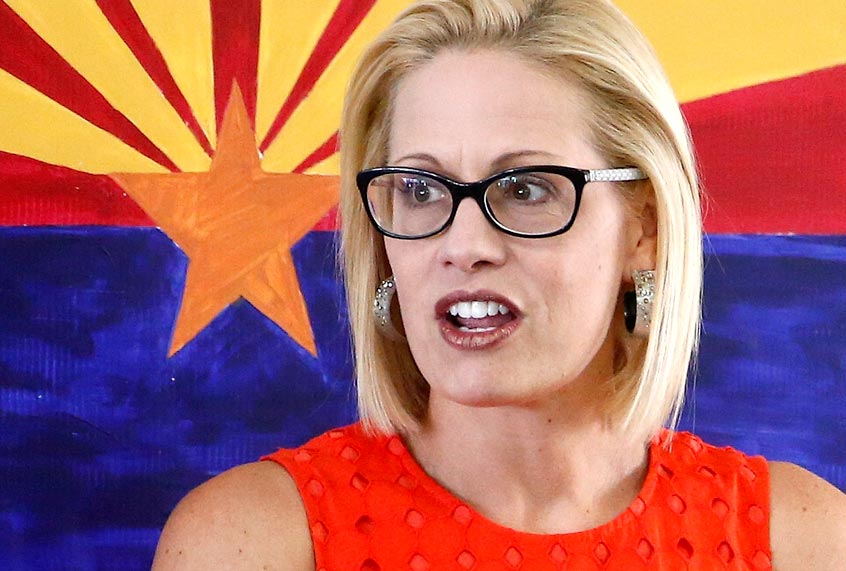An Green Party candidate may cost Democrats the Senate race in Arizona, even though she dropped out and threw her support behind the Democrat.
At this writing, Republican Martha McSally is at 850,043 votes in the race to replace retiring Sen. Jeff Flake, R-Ariz., while Democrat Kyrsten Sinema is less than one percentage point behind at 834,135 votes, with 99 percent of precincts reporting. Green Party candidate Angela Green received 38,597 votes – more than twice the margin between the two major-party candidates.
The race has not yet been called, and the Arizona Secretary of State’s office told The Hill that “thousands of ballots have yet to be processed” so it’s possible Sinema can make up the difference.
“The counties receive hundreds of thousands of early ballots at their polling places,” said Matthew Roberts, a spokesman for the secretary of state. “They are still transporting polling place votes to the counties themselves so there’s quite a bit of ballots that have not been tabulated yet.”
Sinema did not address her supporters on Tuesday and told CNN she would not make remarks until the remaining votes are tallied.
Green, who was polling as high as 6 percent in some surveys, opted to drop out of the race just days before Election Day and endorsed Sinema, who began her political career as a Green Party activist.
Green told Fox News that she had no intention of being a spoiler in the race.
“I was doing it for the people of Arizona. They really need something new and different,” she told the network. “I don’t think people really understand it, because I wasn’t trying to do this to be a ‘spoiler’ or anything, I was doing it because I truly believe that we need something new in this country.”
She previously cautioned that her move was not likely to shift the race.
“If you think me withdrawing is going to put your party candidate over the top, I truly must beg to differ,” she wrote on her campaign website. “My voters, more than likely, would not have voted for either major party candidate or would not have even voted at all. And I can say that with the utmost confidence.”
After she dropped out, however, the Arizona Green Party said it would “disassociate” itself from Green’s comments.
“Green does not speak for the AZGP,” the group wrote. “Her comments are her own. The AZGP does not endorse the candidates of the corporate ruling class.”
Green’s percent of the vote total may have given Democrats flashbacks to the tens of thousands of votes Jill Stein received in Michigan, Pennsylvania and Wisconsin in 2016, not to mention the 97,000 votes Ralph Nader got in Florida in 2000, when the official margin between George W. Bush and Al Gore was 537 votes.
But FiveThirtyEight election guru Nate Silver has said he doesn’t “really buy it” that Green Party voters would have swung the 2016 race or other elections to the Democrats.
“The rub is Pennsylvania, which was close but not that close” in 2016, he wrote. “You have to assume that almost all of Stein’s voters would have gone to Clinton. But both pre-election polls and the national exit poll suggests that a lot of them wouldn’t have voted at all, if they’d been forced to pick between the two major candidates. The breakdown might have been something like 35 percent Clinton, 10 percent Trump and 55 percent wouldn’t vote. That doesn’t wind up netting very many votes for HRC.”


